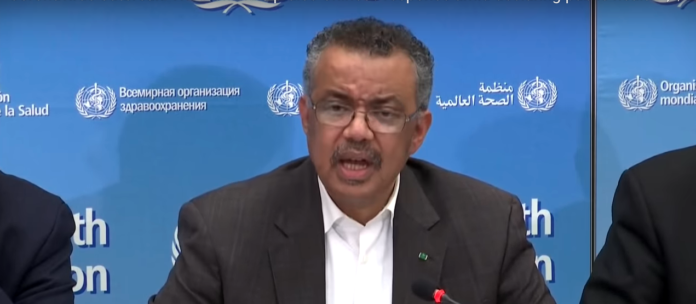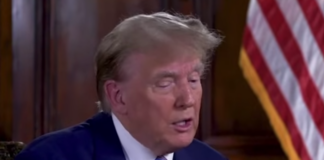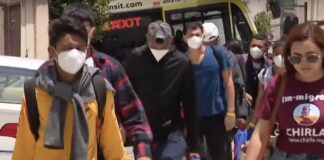OPINION | This article contains opinion. This site is licensed to publish this content.
The World Health Organization (WHO) publicly supported China’s response to the coronavirus in the initial days of the outbreak. The WHO admittedly forwent a proper investigation and endorsed the Chinese authorities’ claim that there was “no clear evidence of human-to-human transmission” on Twitter.
Preliminary investigations conducted by the Chinese authorities have found no clear evidence of human-to-human transmission of the novel #coronavirus (2019-nCoV) identified in #Wuhan, #China🇨🇳. pic.twitter.com/Fnl5P877VG
— World Health Organization (WHO) (@WHO) January 14, 2020
According to Breitbart, the slow reaction of the WHO to verify the claims of the Chinese are documented in a number of tweets from January and February.
Despite criticism and the threat of Democrats creating the “No Ban Act”, President Trump initiated a travel ban on travelers arriving from China in January. This ban was recently defended Dr. Anthony Fauci, the director of the National Institute of Allergy and Infectious Diseases and medical advisor to the president.
When asked about how the country would be doing if travel from China and Iran was not suspended, Dr. Fauci said “I believe we would be in a worse position,”.
Breitbart has reported on the true conditions of China as they begin to report improvements and were recently able to close their final temporary hospital.
Communist officials in China hid the extent of the coronavirus outbreak during the early stages of the epidemic, jailing and silencing whistleblowers, a move that allowed the virus to gain a firm hold. The ruling communist party, however, has hailed the recent slowdown of the outbreak as a sign of the superiority of its authoritarian political system.
A study published earlier this month by the University of Southampton, determined that China could have prevented 95 percent of the coronavirus infections plaguing the globe if Beijing had listened to the doctor whistleblowers in Wuhan about the seriousness of the disease instead of silencing and punishing them for speaking out.
“At critical moments, officials chose to put secrecy and order ahead of openly confronting the growing crisis to avoid public alarm and political embarrassment,” the New York Times acknowledged in early February. China has refused to apologize for its mishandling of the outbreak during its initial phase.
On January 14, the day before the first case to reach the United States reportedly flew from Wuhan to Seattle, Washington, the WHO denied that the disease was spreading through human-to-human transmission.
The WHO tweeted on January 14 “Preliminary investigations conducted by the Chinese authorities have found no clear evidence of human-to-human transmission of the novel #coronavirus (2019-nCoV) identified in #Wuhan, #China”
Preliminary investigations conducted by the Chinese authorities have found no clear evidence of human-to-human transmission of the novel #coronavirus (2019-nCoV) identified in #Wuhan, #China🇨🇳. pic.twitter.com/Fnl5P877VG
— World Health Organization (WHO) (@WHO) January 14, 2020
On January 30, the WHO was reporting that there were 82 confirmed positive cases of the coronavirus in 18 countries outside of China. They were also giving little weight to the possibility of human-to-human transmission when they tweeted “To date, new #coronavirus (2019-nCoV) person-to-person transmission outside of #China has been limited. WHO Situation Report 30 January 2020 2020 http://bit.ly/2tU5h5q
To date, new #coronavirus (2019-nCoV) person-to-person transmission outside of #China has been limited.
WHO Situation Report 30 January 2020 https://t.co/C2NiCkexo7 pic.twitter.com/1z5sef0drw
— World Health Organization (WHO) (@WHO) January 30, 2020
In February, the WHO showed little belief that the coronavirus was transmittable by asymptomatic people when tweeted graphics highlighting FAQs.
Q: Can #2019nCoV be caught from a person who presents no symptoms?
A: https://t.co/j6HsqP9iJb pic.twitter.com/1wPMoM9BzE— World Health Organization (WHO) (@WHO) February 5, 2020
On February 21 the WHO was reporting that the number of infected patients worldwide ahd reached 75,000. One the same day, WHO Director-General, Dr. Tedros Adhanom Ghebreyesus, promoted his support of China on Twitter and continued to downplay the possibility of community transmission.
The tweet read: “The measures #China & other countries have taken have given us a fighting chance of containing the spread of the #coronavirus. We call on all countries to continue their containment measures, while preparing for community transmission if it occurs”- @DrTedros #COVID19″.
"The measures #China & other countries have taken have given us a fighting chance of containing the spread of the #coronavirus.
We call on all countries to continue their containment measures, while preparing for community transmission if it occurs"-@DrTedros #COVID19
— World Health Organization (WHO) (@WHO) February 21, 2020
On February 27 the Dr. Tedos was still not emphasizing any sort of risk of spreading widely within a small community. “But this #coronavirus is not influenza. With the right measures, it can be contained. That is one of the key messages from #China. The evidence we have is that there does not appear to be widespread community transmission”-@DrTedros #COVID19
"But this #coronavirus is not influenza. With the right measures, it can be contained.
That is one of the key messages from #China. The evidence we have is that there does not appear to be widespread community transmission"-@DrTedros #COVID19
— World Health Organization (WHO) (@WHO) February 27, 2020
The WHO has been vocal about their criticism of referring to COVID-19 as the “Chinese Virus”, which was made popular by President Trump. The WHO claimed that it promotes racism and could lead to “more sever health problems” due to a stigma surrounding Asians. Despite being limited on equipment, the United States has reportedly offered to assist other countries, including North Korea, in this ongoing worldwide epidemic.






